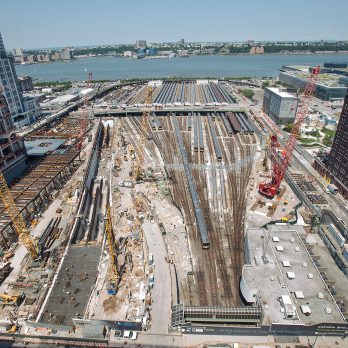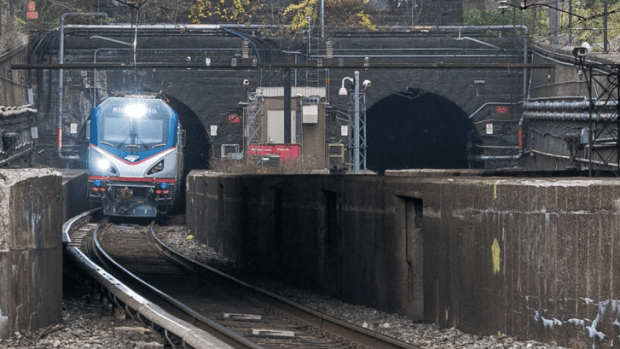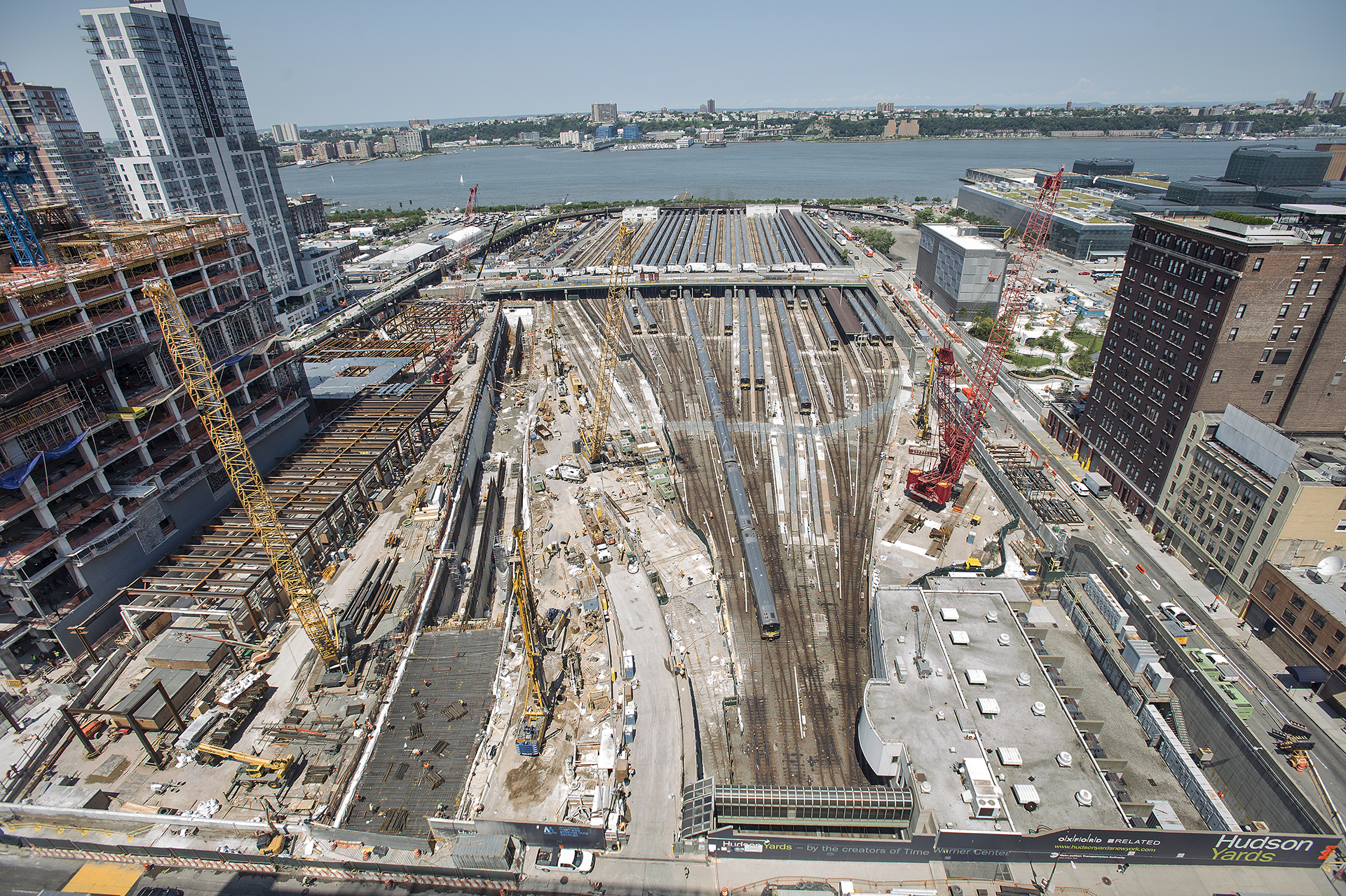
The extreme storms that the Northeast has witnessed during the past 10 years make it painfully obvious that we can’t afford any longer simply to talk about our climate goals; we must make progress toward them. For the region’s transportation sector (the source of a third of our CO2 emissions) the method to effect those goals is fairly simple: The more people we can get to use less-carbon-intensive transportation, such as rail, bus, or bike, and the fewer people drive or fly, the better.
The Biden administration has greenlighted Amtrak’s $30-billion Gateway program — which will build two new train tunnels under the Hudson River, repair the existing two, and replace aging bridges in the Meadowlands — giving us a golden opportunity to make substantial positive change to help the environment.
But we need a more comprehensive plan.
Gateway, which will double train capacity to 48 an hour under the Hudson River, certainly will put more people on trains, but the plan focuses solely on adding capacity to Amtrak and NJ Transit’s operating territory. Designing to meet climate goals can’t be so rigid. If rail is to compete with our interstate highways, Gateway must serve more than just Amtrak and NJ Transit customers’ needs, and help our local railroads to become a truly interconnected regional system. A regional design could be a watershed moment for the nation if the investment in it truly advanced the vision of the Paris Climate Accords by reducing transportation’s carbon footprint.
President Biden could put a stamp on his legacy if he could force the issue. By linking the Gateway investment to the broader climate goals of reducing air and road travel in New York and along the Northeast Corridor, Biden could encourage more concrete steps that could lead to the lessening of CO2 emissions from vehicles using the facilities of the Port Authority of New York and New Jersey (including its airports), Metropolitan Transportation Authority bridges and tunnels, and other regional highways.
As a meaningful first step, Biden must ask New York and New Jersey to create a regional climate-action plan. There already is a vehicle: the Port Authority, the bi-state agency the Congress authorized 100 years ago in order to facilitate interstate commerce, is the best positioned of all regional transport agencies for the task because ion its size and its mandate to work across state lines. It could look at the current plans for Gateway and at climate goals and sit in a room with all transportation agencies and ask the basic questions that will induce more rail use and reduce the demand for car and air travel. (Indeed, the ideas that became Gateway originated in a 1995 major-investment study, Access to the Region’s Core, led by the Port Authority but also involving the MTA and NJTransit.)
If we want fewer people to choose to travel by car or airplane, then the regional services must make train travel attractive and convenient by simplifying operations through Penn Station. East Side Access, slated to open in 2022, will link the LIRR to Grand Central Terminal. But it has the same issue as Gateway: It adds capacity, but does not address regional travel demand with the goal of shifting drivers into rail cars.
When Amtrak took over the Penn Central Railroad in 1971, it gained tracks that spanned the country, including the Northeast Corridor, the nation’s most heavily trafficked rail corridor and one on which many local commuter railroads rely. In fact, of the 800,000 daily riders that use the Northeast Corridor, only 40,000 are Amtrak passengers, according to a recent Northeast Corridor Commission report.
Although Amtrak owns the Northeast Corridor, it does not control how local commuter-rail systems may use its tracks. Most rail-traffic congestion in New York’s Penn Station comes from commuter trains constantly crossing each other’s paths, changing direction and basically getting in each other’s way. This confusing system does not give people in New Jersey easy access to Long Island, the Bronx, Westchester or Connecticut — and visa versa.

In order for our local commuter railroads to knit themselves into a truly regional system, those services must operate beyond the limited boundaries that confine NJ Transit, the Metro-North Railroad, and the Long Island Rail Road today. A unified approach in planning, building and operating the greater capacity envisioned by the Gateway project could create such consumer and environmentally friendly options. Yet there is no plan to bring it all together.
The Regional Plan Association has talked about it for years, including in its most recent report, which “envisions a series of new projects, phased in over the next few decades, to unify the commuter rail system and expand it into a seamless regional transit system.” The RPA called it the Trans-Regional Express (or T-REX), which would “provide frequent, reliable service, directly connecting New Jersey, Long Island, the Mid-Hudson, and Connecticut, create new freight-rail corridors, and provide additional transit service to riders within New York City.”
The RPA and other advocates posit an integrated systems along the lines of the RER in Paris or London’s Elizabeth Line/Crossrail, which is scheduled to open in 2022. But in order to create a local analog of the RER here in New York and meet climate goals, planners must expand the design of Gateway beyond its immediate goals and extend it to include climate objectives.
To get working on this vision, however, we’d need an organizational push among city, state and federal officials, and transport agencies, the likes of which we’ve never seen. Biden must work closely with Sen. Schumer of New York and Sen. Booker of New Jersey in order to set the stage for the Port Authority to take the necessary steps to wean itself and the other agencies away from relying on tolls and parking and landing fees. The Port Authority could take the lead, yet without any interagency or interstate plan we are kidding ourselves that we will make any meaningful progress toward our transportation-sector CO2-reduction goals. We must use the $30-billion investment in Gateway’s development as a lever.
Time is running out to create a workable plan if we are to maximize the Gateway investment for the benefit of the region and our climate.
Bob Previdi is a transit consultant and a former planner and spokesman for NYC Transit. Mysore Nagaraja is a consultant and former president of MTA Capital Construction. Howard Sackel is a consultant and former director of the Port Authority’s ARC project.






